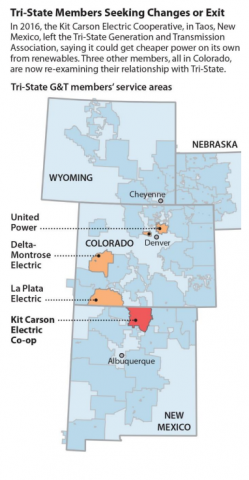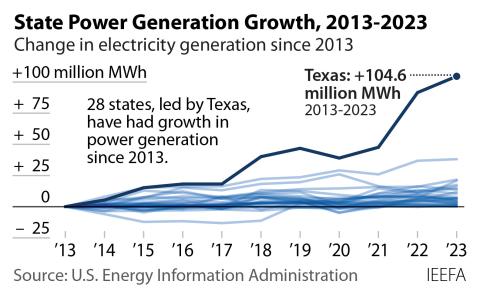How Kit Carson electric engineered a cost-effective coal exit
Download Full Report

Key Findings
Part of KCEC’s motivation—and part of the benefits it seeks to reap from redefining its business model—is through ripple-effect local economic development that creates and sustains hometown employment by investing a little more than $1 million construction-wise per megawatt of new solar capacity.
The co-op’s solar program is anchored to a federal initiative that promotes KCEC’s potential for replication through a “Resilient Renewable Energy Roadmap for Rural Electric Cooperatives” that KCEC is developing jointly with the National Renewable Energy Laboratory in Golden, Colo.
As KCEC negotiated its Tri-State exit, other Tri-State members took note, and in December of last year, the Delta Montrose Electric Association (DMEA) asked the Colorado Public Utilities Commission (PUC) to require Tri-State to release DMEA from its contract as well.
Executive Summary

In ending its longstanding relationship three years ago with Tri-State Generation and Transmission Association, Kit Carson Electric Cooperative in northern New Mexico struck a path that has simultaneously created greater local control of how electricity is generated and saved the small co-op millions of dollars.
The deal has sparked what may be a larger member revolt against Tri-State, which wields considerable muscle across its four-state reach even as it has remained out of step with market trends that are undermining the economic viability of coal-fired power, a Tri-State mainstay.
The Kit Carson co-op move suggests a model for other rural electric co-ops to follow, not just regionally but nationally as well— the co-op is partnering with the U.S. Energy Department’s National Renewable Energy Laboratory (NREL) to create a template for other co-ops interested in pursuing solarpowered electricity production.
The economics of the New Mexico co-op’s new business model argue for such changes based on benefits that include greater transparency into wholesale power prices, more local choice on how electricity is generated, and lower long-term retail electric rates.
Press release: Surging energy prices accelerating pace of wind, solar and battery adoption
Please view full report PDF for references and sources.












